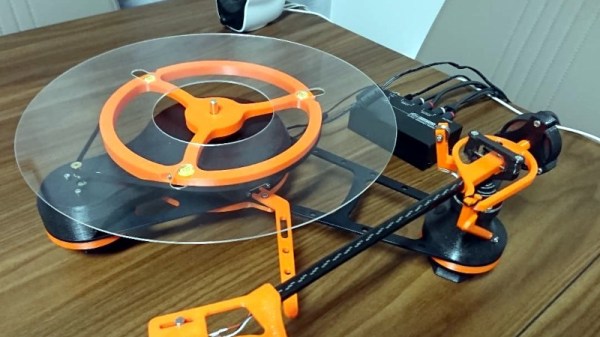Thanks to a feature by Prusament because it uses their filament, we’ve been interested to read about the SongBird turntable from the British outfit Frame Theory (Note: at time of writing, they have an expired certificate). It’s a commercial product with an interesting twist for the Hi-Fi business: buy the completed turntable or buy a kit of parts and print the rest yourself.
We’re always interested to see new things here at Hackaday but we’re not in the business of promoting commercial products without a tech angle. This turntable has us interested then not because it happens to be 3D printed but because it’s instantly raised our curiosity over how suitable 3D printing is as a medium for a high quality audio component. Without descending into audiophile silliness we cannot overstate the effect that rigidity and mass of turntable components has on its audio quality. Take a look at this one we featured in the past for an extreme example.
So looking more closely at the design, we find that the chassis is aluminium, which makes sense given its visibly thin construction. Close examination of the photos on their site also reveals the tonearm to be made of carbon fibre tube, so it’s clear that they’ve put some effort into making a better turntable rather than a novelty one. This does raise the question though: manufacturing practicalities aside could you 3D print the whole thing? We think that a 3D printed chassis could replace the aluminium one at the cost of much more bulk and loss of the svelte looks, but what about the tonearm? Would one of the carbon-fibre-infused filaments deliver enough stiffness? It would be particularly interesting we think, were someone to try.










